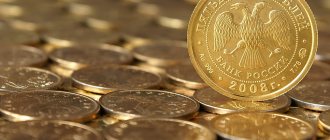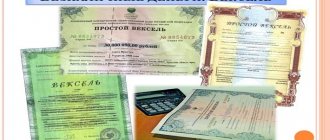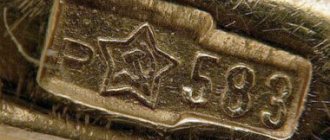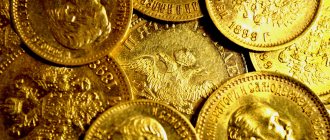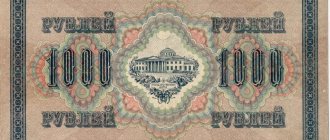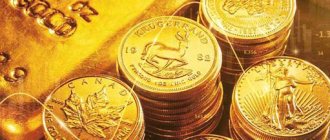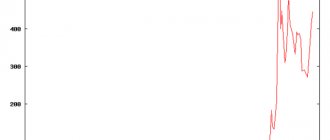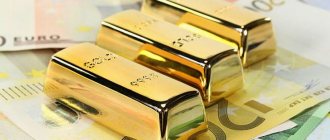Greetings, dear visitors of our website! Today's topic comes to us from the middle of the 19th century, but remains relevant and hotly discussed today. Once upon a time, the introduction of the metallic gold ruble into internal monetary circulation made it possible to raise external market relations and confidence in the ruble among foreign industrialists to a qualitatively new level. The Russian currency, along with the British pound, has become the most stable in Europe. I propose to find out what the gold ruble is and what role the gold standard can play at the present time.
What it is
The coin ruble made of gold is a metal monetary unit of the Russian Empire introduced into circulation in 1897.
Imperials and semi-imperials were in circulation in Russia along with silver metal money and paper credit notes since 1843, but were used more often as a special currency for foreign trade. Only after the reform of Count Sergei Witte was gold introduced into internal circulation in the country.
A Brief History of the Introduction of the Gold Standard in the Russian Empire
In the middle of the 19th century. The Russian Empire had a bimetallic monetary system. The royal treasury contained equal amounts of silver and gold. But the paper ruble was more tied to silver.
As a result of the crisis that followed the Crimean War in 1858, credit notes lost their security - the state treasury stopped exchanging them for metal coins. It became clear that bimetallism with a tendency towards silver monometallism could not continue to exist, and by the end of the 19th century. monetary reform is overdue.
The Minister of Finance of the Russian Empire, Sergei Witte, having analyzed the single currency system of the leading industrial countries, placed a bet on gold. And I was not mistaken. The introduction of precious coins into internal monetary circulation gave the country the necessary economic stability. The rapid growth of industrial production in pre-war Russia and the more than doubling of the empire's gold reserves provided the Russian ruble with a stable footing.
Such a system in Russia existed until the beginning of the military mobilization of the districts bordering Austria-Hungary, when more than half a billion gold rubles suddenly disappeared from circulation, sinking into the numerous hiding places of ordinary people.
Gold ruble in Soviet Russia
In 1922, the People's Commissar began minting Soviet chervonets of 900 standard, which again stabilized the ruble exchange rate. The content of pure gold in one chervonets is 7.74234 g.
Results of monetary reform
The Tsar approved Witte's initiative, and already on May 8, 1895, official permission was given to conclude transactions for gold. Offices and branches of the State Bank now had the right to buy gold coins. In June of the same year, the State Bank received permission to place such money in clients' current accounts. And in November, coins began to be accepted at all ticket offices of government agencies and state-owned railways. This prepared the way for the introduction of gold rubles, issued two years later. Thanks to the smooth implementation, changes in the financial system were not perceived by the inhabitants of the empire as something unnatural and sudden.
The main achievements of Witte's monetary reform:
- stabilization of the ruble exchange rate;
- attracting foreign investment;
- reduction in inflation.
The financial system after the reform worked in such a way that both gold rubles and paper banknotes circulated on the market at the same time. But a strict permissible limit was imposed on the issue of banknotes. It was allowed to issue no more than 300 million rubles, which were not backed up by the country's real gold reserves. The stable position of the Russian ruble on the world market contributed to the fact that there was no rush around gold coins on the domestic market. People did not try to accumulate them at home for a rainy day. Many wealthy citizens, on the contrary, preferred to deal with paper banknotes, which were more convenient in everyday life.
In addition to strengthening the gold ruble exchange rate in the foreign and domestic markets, thanks to the monetary reform it was possible to stimulate the influx of foreign investment into the country. This was one of the main goals that Sergei Witte set for himself. He even called his reform a “golden bridge” between Russia and Europe, and he turned out to be right. Foreign capital literally poured into Russian industry. From 1896 to 1900, the economic situation strengthened so much that the government managed to repay the external debt of 258 million rubles.
At the beginning of the 20th century and before the empire entered World War I, the Russian ruble was highly valued relative to the currencies of other countries. In 1913, the British pound sterling was worth 9.4 rubles, but the American dollar was less than 2 rubles. The currencies of other European powers were even cheaper compared to the ruble. A German mark cost only 0.46 rubles, and one French franc cost 37 kopecks. For comparison, a kilogram of good noodles cost a little less than a French franc in 1913, but only half a kilo of Tula gingerbread could be bought with it.
Confidence in the gold ruble among Western financiers and industrialists was very high, since the government never interrupted the exchange of banknotes for real gold. This step was not resorted to even during the Russo-Japanese War of 1904-1905 and during the subsequent revolution of 1905.
Reasons for canceling chervonets
At various points in history, most often during a crisis, precious metal coins had to be temporarily withdrawn from circulation. Securing money with gold has many advantages, among which the main ones are high density, small storage volume, stability, uniqueness and other qualitative characteristics of the precious metal.
However, later gold coins had to be abandoned completely for a number of reasons:
- Chervonets of high standard had increased softness, were easily scratched, and deteriorated when frequently checked for authenticity by biting. Coins were often lost, which upset the balance of free circulation of money.
- The rapid growth of trade turnover could no longer be ensured by minting coins in the required volume.
- The large weight and small volume are convenient for storage, but caused a number of inconveniences during transportation. Even a small purse of gold was extremely weighty.
This led to gold being kept in the treasury, and paper money becoming a kind of certificate for it. After the abolition of the standard in the United States (1971), almost all countries abandoned their currency peg to gold.
New monetary system
On January 3 (15), 1897, Russia switched to the gold standard. Gold coins of 5 and 10 rubles, as well as imperials (15 rubles) and half-imperials (7.5 rubles) were minted and put into circulation. The new type of credit notes were freely exchanged for gold.
However, many preferred paper money: it was easier to store.
The convertibility of the ruble strengthened credit and contributed to the influx of foreign investment and the economic development of the country. The initiator and conductor of the monetary reform of 1897 was S. Yu Witte, Minister of Finance of Russia in 1892-1903.
The study of their experience, sober calculation, unyielding will, professional competence, knowledge of the mechanisms of power gave S.Yu. Witte had the opportunity to develop a reform project and gain the support of Emperor Nicholas II. The reform was prepared in an atmosphere of secrecy, since it was assumed that it would not be supported by broad sections of society, especially court circles and the landed nobility: stabilizing the steering wheel met the objectives of industrial development, but led to a fall in prices for agricultural products.
The Ministry of Finance and its head were subjected to sharp indignation, attacks, and accusations of wanting to impoverish the country. Critical articles, angry feuilletons, pamphlets and cartoons appeared in the press.
Caricature of Witte
The majority of members of the State Council opposed the reform, which forced Witte to transfer it to the discretion of the Finance Committee, where he had many associates. Under the chairmanship of Emperor Nicholas II, the decision to adopt the monetary reform was made at an expanded meeting of the Finance Committee.
What is the backing of the Russian ruble today?
Although Russia has been steadily accumulating the country's gold reserves over the past decade, these reserves are not enough to fully back the ruble. The factors that support the current ruble are foreign currencies, mostly the US dollar, and energy resources.
However, in conditions of economic pressure from OPEC, Russia needs alternative solutions.
Is the ruble currently pegged to gold?
Today's ruble is not tied to gold; the country's reserves in precious metals, in all its magnitude, can barely cover 5% of convertible currency.
However, recent discoveries by chemists in gold mining have significantly reduced the cost of extracting gold from ore, which can significantly accelerate the build-up of the country's reserves.
Origin of the name of the ruble
Among all the versions of the origin of the name “ruble”, two are considered the most truthful. Both of them originate from the root of the verb “to chop.”
According to the first version
, meant the severed part of a silver hryvnia - an oblong ingot of silver used by the Slavs as money.
At the dawn of Russian history, there were also different hryvnias. Novgorod and Moscow hryvnias were considered the most common.
Moreover, in Moscow, a ruble meant half of this silver bar, and in Novgorod and some other cities - a quarter.
Second version
The origin of the name “ruble” is based on the fact that the hryvnia was cast in two stages. At the junction of the fills, a clear influx in the form of a scar formed.
Therefore, a hryvnia with such a scar approximately in the middle was considered a ruble.
The ruble has been fully established as the national Russian currency since 1534. At that time it was one hundred Novgorod or 200 Moscow “money” (future kopecks).
It was first minted in the form of a coin familiar to us in 1654, when Tsar Alexei Mikhailovich Romanov, nicknamed “The Quietest,” reformed the monetary system. But this currency did not last long, as it did not contain a sufficient amount of silver precious metal. Due to this, the copper penny quickly lost its purchasing power. This caused inflation, large amounts of counterfeit money, and eventually led to the Copper Riot in 1662. A year after this, the production of copper coins had to be suspended.
Pros and cons of the gold standard
One of the main advantages of the gold standard is the almost complete absence of inflation. The Central Bank of the Russian Federation is taking desperate measures to protect the ruble in the face of European sanctions. Such collateral could significantly strengthen the ruble. Therefore, options for reducing dependence on the dollar are widely discussed in government circles, but there are many pitfalls.
Disadvantages of such a system:
- Gold has no fixed value. Its value is determined by the presence of supply/demand. Despite all the calculations of experts, it is difficult to predict the true reserves of gold in the earth's crust and the cost of mining methods that may be discovered in the future.
- The constant need to accumulate money supply requires a correlational growth of the gold fund, which is also possible only up to certain limits.
- In case of crises, there is a need to issue an unsupported volume of foreign currency.
- The complexity of internal macroeconomic transformations.
- Lending to individuals and legal entities will be limited.
- Problems in making international payments.
Bread and tariff
The treasury of the Russian Empire is the dream of any Ministry of Finance: a minimum of social expenses, says Sergei Bespalov, historian, leading researcher at RANEPA .
— Russia at the turn of the XIX-XX centuries. luckier than at the beginning of the 21st century. — its Ministry of Finance was successively headed by several talented administrators. First N. Bunge , then I. Vyshnegradsky and finally S. Witte . They were busy replenishing the gold reserves, and Vyshnegradsky began preparing the monetary reform that Witte carried out. The reform made the ruble not only convertible - it was also valued within the country, which was more important. In addition, Witte skillfully borrowed from foreign banks - at a low interest rate. By reborrowing, he managed to reduce payments on previous debts.
Article on the topic
"Rootless" half-thief. Prince Menshikov was Russia's first crisis manager
Vyshnegradsky is credited with the phrase: “We don’t have enough to eat, but we’ll take it out,” which referred to the export of bread. But he could very well say this, because the export of bread for the Russian Empire was the most important source of treasury income - almost like oil today. And the volume of grain exports had to be maintained at a high level. The exporters of bread were mainly not peasants, but large landowner farms - like agricultural firms today.
The heyday of the Russian economy at the beginning of the 20th century. was carefully prepared. And the main achievement of the Ministry of Finance, in addition to the gold ruble, can and should be considered the Customs Tariff of 1891, developed by Dmitry Mendeleev . There is a legend that it was the Customs Tariff, and not the periodic system of chemical elements, that the scientist considered his main achievement. Mendeleev was Sergei Witte's closest associate. The customs tariff helped protect the market from cheap imports and develop domestic industry. At the same time, high duties led to rising import prices, which is why the tariff had many opponents.
Taxes were a major source of treasury income. They are believed to have been lower than in other countries. However, the standard of living in Russia at the beginning of the 20th century. was lower. Taking this into account, it turns out that the tax burden was comparable to other countries - there was no difference “by several times.” In addition to taxes, “redemption payments” went to the treasury - until 1905, peasants paid for the purchase of land from landowners during the abolition of serfdom.
State expenses were incomparably lower - there were almost no social provisions, pensions were paid to narrow groups of the population. But when they paid... After the death of the director of public schools of the Simbirsk province, Ilya Ulyanov , his entire large family, including the future leader of the proletariat, lived on a pension for many years.
We thank Grigory Yesayan for his help.
Read more in the next issue of AiF.
Is it possible to return to the gold standard system?
Backing the ruble with gold can be the main key to solving many domestic and international problems, but it is important to remember that this is not a panacea or protection against inflation.
Some experts call such resuscitation a utopia and call for considering the option of cryptocurrency.
The volume of world and Russian trade is so large that it is impossible to provide it with gold. But, according to many signs, one of which is the rapid increase in gold reserves, the leadership of the Central Bank of the Russian Federation and the president are planning to set a course for a return to the gold standard. Pavel Maslovsky, an entrepreneur and politician, expressed the idea “that this is inevitable.”
Options for backing the ruble with gold
The current financial system is not sustainable in the long term. Sooner or later there will be a collapse. Therefore, the global financial elite is looking for ways to solve the brewing crisis. One such option is bitcoins.
A return to a solid backing of the ruble in gold is possible in several options:
- World standard. Alan Greenspan, head of the US Federal Reserve, is an ardent supporter of returning the US to the gold standard. Since the dollar continues to be the world currency, he believes that without a return to the solid backing of the United States, no country will be able to back its currency with gold.
- Gold and foreign exchange relations between a group of countries, for example, Russia - China.
- Transition to providing gold only for the Russian Federation.
Gold coins of Nicholas II 1897-1898.
The highest personal decree 13611 of January 3, 1897, given to the Minister of Finance, provided for the minting of gold coins according to old standards, but indicating a new denomination. That is, this document regulated the minting and putting into circulation of coins in denominations of 7.5 and 15 rubles. During the reform, the St. Petersburg Mint was so busy minting gold coins that the order for part of the circulation of money from high-grade silver (1 ruble, 25 and 50 kopecks) was transferred to Brussels and Paris. During this period, the mint did not deal with copper money at all. They are marked “S.P.B.” minted first in Birmingham and then at the Rosencrantz factory. The design of new denominations continued to follow the standards laid down from the beginning of the reign of Nicholas II. His left-facing profile occupies most of the obverse, surrounded by an abbreviated title, divided in two: “B.M. NICHOLAS II EMPEROR" - "AND AUTOCRET OF ALL RUSSIA." On the reverse were minted the State Emblem in the form of a double-headed eagle crowned with crowns, the denomination and year of issue. A sequence of rounded teeth was minted along the edge on both sides. The famous medalist Anton Fedorovich Vasyutinsky worked on the obverse stamps. The reverse stamps were designed by Avenir Girshevich Grilikhes (numismatists express doubts only regarding the five-ruble note, where his sign was not found).
- Denomination: 15 rubles;
- Material: 900-carat gold;
- Weight: 12.90 grams;
- Net weight: 11.61 grams;
- Diameter: 24.6 mm.
The new imperial had difficulty going through the stages of approving the imperial portrait. Suffice it to say that there are two types of probes, distinguished by the size of the emperor’s head (“small” and “large”). Common to trial imperials was the inclusion of the last four letters of the title behind the neckline (“ROSS”). These portraits did not receive the approval of Nicholas II. On mass coinage, the size of the emperor's head also varies, but collectors divide the coins into two types according to the number of letters of the title extending beyond the edge of the neck (“OSS” and “SS”). During 1897, the mint minted 11,900,033 pieces of both varieties of imperial. They did not continue minting further. The weight of the precious metal is fixed on the edge in the spool system of measures (“PURE GOLD 2 GOLD 69.36 LOVES”). There is also the sign of the mintzmeister “(A•G)” - the initials of Apollo Grashof, enclosed in parentheses and separated by a large dot. Despite the fairly large circulation, the imperial is very popular in collecting circles and is sold for much more than the value of the gold contained in it. To accept government payments into account, the weight of the coin was checked. If it was below three spools and one share (12.8417 grams), the specimen was rejected.
- Denomination: 7 rubles 50 kopecks;
- Material: 900-carat gold;
- Weight: 6.45 grams;
- Pure metal weight: 5.8 grams;
- Diameter: 21.3 mm.
The unusual denomination of 7 rubles 50 kopecks, corresponding to the golden five-ruble note of the times of Alexander III, was also minted in accordance with Decree 13611. The gold content is also indicated on the edge (“PURE GOLD 1 ZOLOTNIK 34.68 HALES”) along with the sign of the mintsmeister “(A•G)”. In total, the St. Petersburg Mint produced 16,829,000 copies of the semi-imperial. No varieties of the coin have been identified, and in catalogs it is listed in one position. Although some collectors divide semi-imperials according to the type of portrait of Nicholas II into “flat chasing” and “convex chasing”. Minting was also carried out for only one year. Similar coins with other dates are unknown. For payments, coins with a total weight of at least one spool and forty-eight shares (6.3986 grams) were accepted. All characteristics of the imperial and semi-imperial, including the lower permissible weight limit, were included in the Coin Regulations in 1899.
- Denomination: 5 rubles;
- Material: 900-carat gold;
- Weight: 4.3 grams;
- Net weight: 3.87 grams;
- Diameter: 18.5 mm.
As stated in Executive Order 13611: “Due to its importance and complexity, this matter may still require lengthy discussion.” - that’s what happened. It is not known whose dissatisfaction or rejection the new denominations caused, but during 1897 proposals were made to return to coins of the usual denomination, albeit with a lower gold content. The result of the discussions was Decree 14632 of November 14, which began with the words: “To facilitate payments with gold coins, We recognized it as a good idea to approve your proposal, considered in the Special Committee, on the minting and release into circulation, in addition to the imperial and semi-imperial coins, of a five-ruble gold coin in denominations of one third of the imperial." The St. Petersburg Mint immediately began minting the new denomination and managed to produce 5,372,000 five-ruble coins with the date “1897”. Here they decided to deviate from previous standards and not place the gold content of the coin on the edge, limiting themselves to an ornament from a sequence of segments bent at right angles, among which they placed the sign of the mintzmeister - “(A•G)”. However, a small part of the circulation did not receive a rim design, and now these coins are considered real numismatic rarities. The weight limit below which a coin could not be used for payments was set to one spool (4.2658 grams). The peak production of five-ruble notes occurred in the next three years: 1898 – 52,378,008 units, 1899 – 20,400,004 units and 1900 – 31,077,013 units. In fact, even more coins with these dates were minted, since in the mid-1920s the Soviet government issued an additional edition with old stamps for international payments. The rarest dates are “1906” (10 pieces) and “1907” (109 pieces). The circulation of 1909 is unknown, but it is clearly larger than that of the two subsequent years.
- Denomination: 10 rubles;
- Material: 900-carat gold;
- Weight: 8.6 grams;
- Net weight: 7.74 grams;
- Diameter: 22.5 mm.
The release of the ten-ruble coin took the longest time. Its appearance was regulated by Decree 16199 of December 11, 1898. Like the five-ruble coin, this coin became the most popular of the line that appeared during the Witte reform. The gold content, together with the sign of the mintsmeister, is indicated on the edge (“PURE GOLD 1 ZOLOTNIK 78.24 SHARE”). The lower acceptable limit for ten rubles as a means of calculation is two spools and six tenths of a share (8.5582 grams). In the first year of minting, only 200,000 ten-ruble notes were issued. The largest circulation (27,600,013 pieces) occurred in 1899. The rarest gold tens are coins from 1906 (only 10 copies). Dozens with the date “1911” should also be infrequent (according to documents, there are only 50,011 of them). However, the Soviet minting of tsarist gold significantly increased their number. Before the revolution, no one called gold tens chervonets. The nickname stuck to them after the minting of the Soviet chervonets - a gold coin of the RSFSR with similar parameters. In the first years of Soviet power, royal ten-ruble notes could be used to pay as hard currency. During the period of unstable ruble, dollars or euros now play approximately the same role.
However, it should be noted that ten-ruble gold coins were still minted in 1897. They had a double denomination “Imperial - 10 rubles in gold”. But they were issued according to the “Rules on the Coin System” of 1885, that is, they represented the imperial of the old standard. This is a donative coin that was given at the royal court as a particularly valuable gift. Their circulation is extremely small. For example, in 1896, 125 such imperials were produced. The circulation for 1897 has not been established. They could not be circulating coins.
What will happen if the ruble is tied to a precious metal: critics’ opinions
Experts in their comments on the return to the previous system sometimes express directly opposite opinions. Some advocate for reinforcing the Russian ruble with gold - fortunately there are reserves and deposits. Others appeal with hard facts and refute the very possibility of such a scenario.
Anton Tabakh, a commentator for Forbes magazine, believes:
“The need for self-restraint will most likely be the main factor preventing the transition to the gold ruble, which, quite possibly, would be useful for the population and business.”
The modern economic encyclopedia contains data that pegging the ruble to gold will ultimately lead to a shortage and an increase in the price of money itself as a fact due to the limited possibilities of their issue, which in turn will lead to a decrease in production and an increase in unemployment. There will be an abundance of goods, but there will be nothing to buy them with.
According to the vice-president of Z.M.D. A. Vyazovsky, “gold is an excellent investment instrument, but a return to the old days, when it served as a means of payment, is hardly possible.”
Revenue budget
Russia at that time based its policy not only on deficit-free budgets, but also on the principle of significant accumulation of gold reserves. Despite this and without the slightest increase in the tax burden, government revenues increased from 1.410 billion rubles. in 1897 grew steadily, while government expenditures remained more or less at the same level. Over the last ten years before the First World War, the excess of government revenues over expenses amounted to 2.4 billion rubles. This amount seems all the more impressive since during the reign of Nicholas II, railway tariffs were lowered and redemption payments for lands transferred to the peasants from their former landowners in 1861, as well as some taxes, were abolished.

The emergence of banknotes and imperials
The year 1755 was marked by the emergence of new Russian money. These were coins called “golden imperial”. At face value they corresponded to 1000 copper kopecks or 10 silver rubles and contained 11.61 grams of gold metal.
Three years after the imperials, paper notes or banknotes in denominations of 100, 25, 10, 5, 3 and 1 ruble began to be printed.
During the reign of Emperor Paul the First, towards the end of the 18th century, the name “chervonets” extended to gold coins with a nominal value of 10 and 5 rubles.
Further history of the ruble
Among all national world currencies, the ruble ranks second in age, second only to the British pound sterling. Its name has been mentioned in written historical sources since the 13th century.
Continuing the conversation about the history of Russian money, we note that the minting of copper coins was resumed under Peter the Great, the son of Alexei Romanov, in 1700. The new tsar also carried out monetary reform. Under him, the kopeck was divided into several denominations: 1/8 or half-half, 1/4 or half and 1/2 - money. A year later, silver coins in denominations from 50 to 5 kopecks were added to them. They received the names “10 money”, “kopeck piece”, “half fifty dollars” and “half a piece” respectively. Since 1704, metal rubles began to be minted. The coin contained between 25.0 and 26.0 grams of silver precious metal for a total weight of 28.0 grams.
At the same time, a penny made of copper and a chervonets made of gold appeared, corresponding in its parameters to the ducat of Venice. It was made of gold with a purity ranging from 969 to 980 and weighed 3.47 grams. Later, under Peter the Great, the metal standard was reduced to 781, and again raised to 981 in 1729, when Anna Ioannovna was on the throne. In the subsequent historical period, until 1911, the sample was not made less than 900. In 1911, the last imperial chervonets in Russia were minted.
It should be noted that, in addition to the ten-ruble denomination, the chervonets could be in denominations of 16, 7.5 and even 5 rubles.
